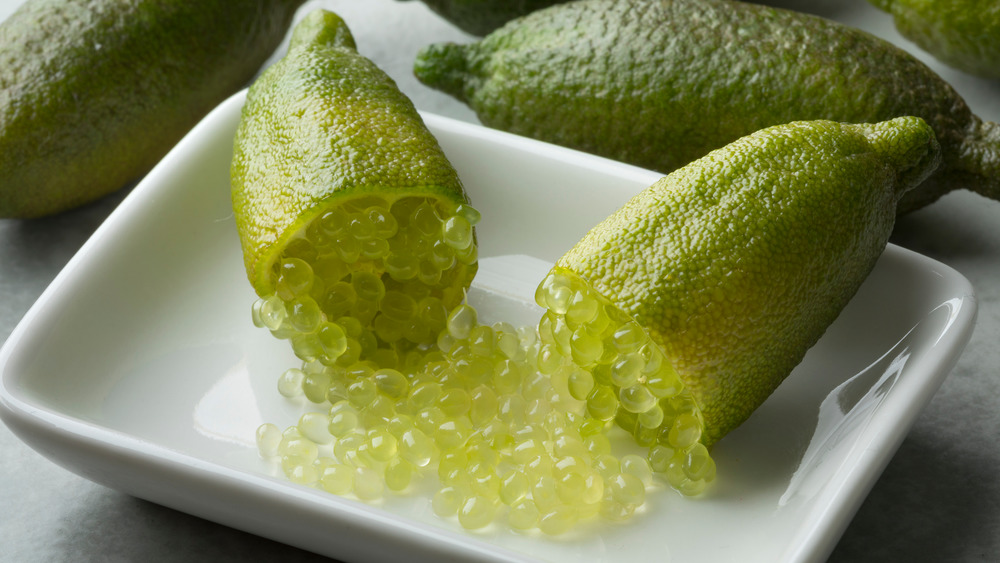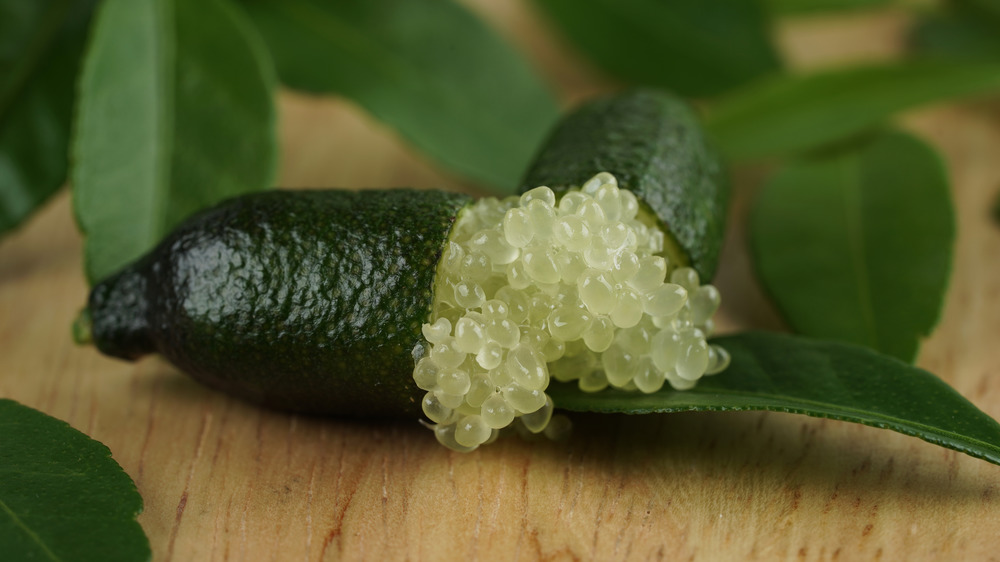What Are Finger Limes And What Do They Taste Like?
Have you ever heard of "citrus caviar"? Meet the finger lime. While finger limes originate from Australia, they have begun to grow in popularity all across the world. Internationally, chefs are using them more and more, intrigued by their delicate flavor, unique texture, and their varying applications in lots of different specialty dishes.
Bloomberg states that the finger lime was labeled as a "microcitrus" by a scientist in 1915. Some don't immediately look like a very special ingredient — they're typically stout, tube-shaped, and varying shades of brown or green, leading some people classify them as "ugly" produce, "as if created by a horticultural Dr. Seuss," says Bloomberg. Yet their exterior is in sharp contrast with their bright, surprising interior. VSCNews notes that finger limes are "2-to-4 inch, finger-shaped, cylindrical fruits." Nature and Garden states that "when ripe, each finger lime fruit contains hundreds of kernel-sized crystals under pressure under the skin" which, like actual caviar, "pop" when you bite into them; hence the "citrus caviar" nickname. When the fruit is sliced or cut open, the "juicy beads burst out," ready to savor.
How do you eat a finger lime?
Finger limes are delicious when paired with seafood. They can also be pickled, juiced, and zested. They provide a unique accent in cocktails, salads, and desserts, and are a perfect ingredient for "vegetarian sushi," as noted by Food52. Their texture is similar to caviar, with that delicate burst or pop of juice, but of course without any fish-y flavor. They obviously have a lime-y, citrus flavor, but they're typically not as sour as regular limes, according to Gastro Obscura.
These diminutive culinary delights do, however, have a downsides. Bloomberg notes that they're rather expensive — they "mail order for as much as $150 a pound." This price point may be why the Australian fruit is now being grown in the states. According to ABC 7 News, the fruit is now being cultivated throughout California. One California farm growing the fruit is Jim Shanley's operation in Visalia, which began growing the fruit in 2017. The unique fruit can now be purchased at Whole Foods, in other specialty supermarkets, and has even started popping up in some Blue Apron boxes.
Now that you've got the lowdown on all things finger limes, the only thing left to do is try them out and judge for yourself.

